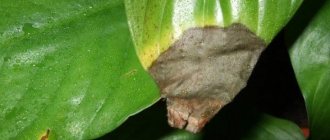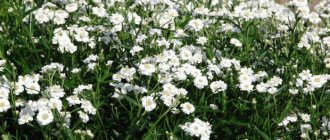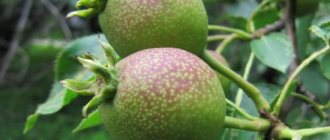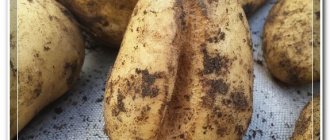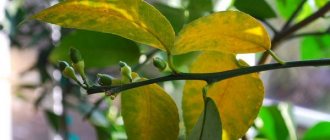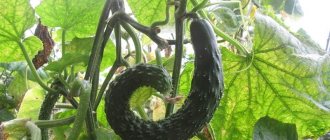Fungal
The largest group of diseases found in indoor plants. Fungal spores can remain in the ground for a long time or reach the flower through dust, water, or air. Infection usually occurs only when certain conditions occur - high humidity, temperature. The fungus multiplies quickly, gradually leading to the death of the plant.
Powdery mildew
The causative agent of the disease is a fungus of the species Podosphaera fuliginea, which is highly resistant to external influences. The risk of infection increases when the plant is kept in high humidity.
In the early stages, a white coating appears on the leaves and flowers, which can be wiped off by hand. Gradually, the spots increase in size, and due to the growth of mycelium, their color becomes brown. The vegetative parts dry out and crumble, and the development of the plant stops.
As a preventive measure, spraying with whey and Bordeaux mixture is used. The most effective drugs for control are copper-containing fungicides, for example, a solution of copper sulfate. In case of severe infection, it is better to use systemic drugs: Hom, Topaz or Skor.
Downy mildew (Peronosporosis)
The disease affects almost any indoor plant, but is rare. The causative agent is fungi of the genus Peronospora. The risk of infection increases when using acidic soils and insufficient ventilation of the room.
When infected, asymmetrical brown spots appear on the upper side of the leaf blades, which gradually darken. A light gray coating forms on the inside. Infected leaves gradually become deformed and fall off. Fungal spores lead to disruption of metabolic processes in the plant and its death.
To avoid the appearance of downy mildew, you need to regularly ventilate the air in the room and monitor the soil moisture. Seeds must be disinfected before planting, as fungus may be present in them. For treatment, a solution of Bordeaux mixture, copper or iron sulfate is used.
Sooty fungus
Externally, the disease can be identified by the characteristic dry dark coating on the outer edge of the leaf blade. The fungus Capnopodium is carried by insects and is not harmful to plants in itself, but it causes clogging of stomata on flowers.
As a result, this disrupts metabolic processes and leads to drying out of the vegetative parts. It is easy to fight the disease; you just need to remove insects in time; plaque in the early stages should be removed with a damp sponge.
Anthracnose
This disease of indoor plants has several forms depending on the fungal pathogen. Often found on palm trees and ficus trees. The pathogen develops quickly at high air humidity in a warm room. The most common symptom is the appearance of dark brown dots and stripes over the entire surface of the leaf. They gradually increase in size and lead to drying out of the green parts of the flower.
Prevention comes down to high-quality disinfection of soil and seeds. If anthracnose is detected, it is necessary to treat the plant with a fungicide (Bordeaux mixture, colloidal sulfur, Oxych) as soon as possible. To completely get rid of the fungus, up to 3 treatments are needed with an interval of 10 days.
Ascochyta blight
All Asteraceae, such as asters, gerberas or chrysanthemums, are especially susceptible to the disease. The cause of the disease is infection with the Ascochyta fungus, which can remain in the ground for a long time. First, small red spots with a characteristic yellow rim form on the leaves. They lead to tissue necrosis, which is detrimental to the plant. Treatment is similar to that for anthracnose.
Septoria
The causative agent of the disease is the fungal spores of Septoria. After infection, dark gray or reddish spots with a pronounced border appear on all parts of the plant. The onset of infection usually occurs in early spring. To prevent infection, you need to promptly remove leaves with any spots and treat the seeds when planting. Copper-containing fungicides and a solution of colloidal sulfur are used as treatment.
Gray rot
The disease is caused by Botrytis fungi. Its spread is facilitated by insufficient lighting in the room and high crowding of plantings. The disease can be identified by a specific fluffy gray-olive coating. It first appears on the stem, then moves to leaves, shoots and flowers.
Dry rot, reminiscent of mold, gradually forms. The risk of infection can be reduced by high-quality soil treatment before planting and seed treatment. The most effective treatment is considered to be a solution of Fundazol, which is used twice with an interval of 7 days.
Leaf rust
The disease is caused by the fungi Phragmidium and Puccinia. Infestation can be determined by the formation of voluminous rust-colored dots on the upper part of the leaves, which usually take on a regular round or oval shape. If treatment is not started in time, they grow throughout the plant, leading to leaf fall and flower death.
The main cause of rust is high air humidity and the use of infected tools to work with the plant. For treatment, broad-spectrum fungicides are used, for example, Vectra, Strobi, Topaz, Abiga-pik.
Brown spot or phyllostictosis
The causative agent of the disease is Phyllosticta fungi. Orchids, roses and hibiscus are susceptible to infection. In the early stages, very small dots of a red or purple hue appear on the plant. They quickly increase in size and lead to tissue necrosis. The disease develops rapidly and death can occur within a few weeks.
To avoid the appearance of fungus, you should use only settled water and follow the watering regime, since spores actively reproduce only in conditions of high humidity. To combat spotting, complex fungicides are used: Vitaros, Abiga-pik or Oksikhom.
Tracheomycosis
This is a large group of diseases that are characterized by damage to the vascular system of plants. The spores enter through the water, developing mycelium inside the stem and shoots. This leads to disruption of metabolic processes, decreased growth and withering of green parts.
Infection can only be determined by laboratory methods; at home, tracheomycosis is considered incurable. Most members of the Asteraceae family, geraniums and begonias are susceptible to the disease. Tropical indoor flowers have strong resistance to the pathogen.
Plant diseases and their treatment photo
We will get acquainted with the probable factors that are the causes of plant diseases. And, of course, my dear indoor plant lovers, I will tell you how to fix these problems.
The lower and older leaves of the plant turn yellow
Cause. In winter, this is insufficient lighting or high room temperature. In summer there is a lack of fertilizers and microelements or moisture.
Solution to the problem. In the summer, you need to water the plant as the substrate dries (not allowing it to dry out), and also periodically apply fertilizer (once every 10-14 days).
In winter, place the plant as close as possible to the light source or provide additional illumination with special or fluorescent lamps.
You can reduce the temperature in the apartment by increasing evaporation (this method is not suitable for all plants) by placing the pot on a tray with expanded clay filled with water.
The edges of the leaves turn yellow
Cause. Potassium deficiency, chlorine or tobacco smoke poisoning.
Solution. Water your indoor plants with settled water (not from the tap).
Before each watering, it is necessary to allow the chlorine to evaporate (24 hours). Potassium deficiency can be easily replenished by feeding containing potassium microelements. I’ll tell you a secret that not all indoor plants like tobacco smoke, and therefore, if people smoke indoors, then for such conditions it is worth choosing plants that are more resistant to tobacco smoke.
The ends of the leaves turn yellow
Cause. Dry indoor air. Alkalinization of the soil. Proximity to a TV or computer.
Solution. In order to eliminate the problem of alkalization of the substrate, you need to remove the top layer of soil (1 cm) and then water it with settled water without chlorine. When the air is dry, the plant is often sprayed with settled boiled water; you can also place containers of water in the room.
The houseplant is soft and lethargic (loss of turgor)
Cause. Lack of watering. Failure to comply with temperature conditions. Lack of microelements (copper, potassium, magnesium). Root disease due to waterlogging of the substrate. As a rule, waterlogging of the substrate occurs in winter and is dangerous for any plant.
Corrective measures. Remove the plant from the pot and carefully examine all the roots. If the root system is dark in color and the roots are soft, then the plant cannot be saved.
If only part of the roots are damaged, all darkened roots should be cut off, as well as leaves and stems with traces of rot (it is recommended to sprinkle the cut areas with crushed coal).
It is necessary to keep the plant without soil for a couple of days, drying it out a little. Then you should plant the plant in a pot, replacing the old substrate with a fresh one. The lack of microelements is compensated by fertilizing with the necessary fertilizers.
Buds falling off or buds not opening
Cause. Lack of lighting or lack of phosphorus due to overdosage of nitrogen fertilizers, sharp temperature fluctuations (ventilation), dry substrate, low air humidity.
Solution. In order to increase air humidity, you should place containers of water next to the plant and spray indoor flowers more often.
Know! Indoor plants during their growth and flowering period must be watered frequently and abundantly, immediately after the soil dries out. If there is insufficient light, the plant should be placed closer to the light source or illuminated with lamps. Any plants preparing to flower must be fed with phosphorus fertilizers, in combination with potassium fertilizers.
Flowering is delayed
The reason is a lack of phosphorus.
Solution. We apply phosphorus fertilizers, it is recommended to add potassium.
Thin and pale shoots or leaves become smaller
Cause. Lack of nitrogen for the plant.
Solution. Fertilize with nitrogen fertilizers.
Buds are not formed or there are very few of them
Cause. The conditions of care during the resting period of the plant were not observed. Unfavorable relationship between temperature, lighting and feeding.
Solution. It is recommended to carefully read special literature about indoor plants and the conditions under which they are kept.
Houseplants are wilting
Cause. Lack of moisture or nutrition.
Solution. Water thoroughly immediately after the substrate dries. Feed indoor flowers with phosphorus fertilizers.
No. 10. Leaves curl and wrinkle, interveinal chlorosis.
Cause. Low temperature. Old leaves – deficiency of phosphorus, potassium, magnesium. Plants with young leaves lack molybdenum, manganese, copper, and boron.
Now you can not only determine the causes of plant diseases, but also help your favorite indoor flowers yourself.
Bacterial
These diseases are caused by infection with pathogenic bacteria. Risk factors are mechanical damage to the plant, violation of care and agricultural practices for growing home flowers. Bacteria are found in large quantities in the soil, so the prevention of all such infections is high-quality disinfection of the substrate during planting.
Wet rot
Symptoms of bacterial rot are especially common on bulbous crops. Infection is promoted by increased soil and air humidity and excessive lighting of the flower. The damage can be determined by the appearance of characteristic wet spots on the leaves and upper parts of the root system.
They gradually increase in size and rotting develops. The areas where bacteria have spread are soft and wet to the touch. In addition, there is an unpleasant odor caused by microorganisms. As treatment and prevention, the watering regime should be adjusted, and darkening should be carried out when exposed to strong sunlight.
Bacterial spot
A dangerous disease for all domestic plants, infection is often observed on bulbous crops when grown in waterlogged soil. The main symptom of spotting is the appearance of watery spots on the leaf veins. Gradually they become black, and a yellow border appears. Infection begins with the upper young parts of the plant and gradually covers the entire bush.
If signs of infection are detected, you need to move the flower to a dry and bright room and cut off all infected parts. The cut areas must be powdered with ash or charcoal. After this, treat the plant twice with Bordeaux mixture, copper or iron sulfate with an interval of 7-10 days.
Bacterial cancer
At home, the disease is rare; large plants in the form of vines or trees are susceptible to infection. The causative agent of the disease is the rod-shaped bacterium Agrobacterium. It can remain in the vascular system of a flower or in the soil for a long time without manifesting itself in any way. The peak activity of the microorganism always occurs at the beginning of spring, as well as when the substrate humidity is high.
Signs of infection develop very slowly. At first, the plant practically stops growing and does not flower. Then a tumor-like formation is formed in the area of the stem, gradually growing in size. It can take several years to develop as the bacteria integrate into the plant's genetic code.
Bacterial cancer is easier to avoid than to fight. To do this, you need to properly treat the soil and seeds before planting, maintain humidity and temperature conditions in the room.
Powdery mildew
The disease is caused by ectoparasitic erysifaceae fungi. The first signs of damage are white spots on the leaves with a gray tint in the form of a powdery coating. These spots then darken and turn black. Over time, the blackness spreads to the entire sheet, covering it on both sides. The flowers, along with the leaves, dry out and fall off. Humidity up to 60% and warm air from 15 to 26° C are especially favorable for the development of the disease.
To avoid powdery mildew, houseplants should not be fertilized with nitrogen fertilizers, especially when the budding process is in progress. Since spores easily travel long distances, bacteria can be introduced from trees located outside the window. The development of the disease is influenced by lack of air, but drafts are also contraindicated. You can treat the affected buds with sulfur, whey or milk.
Viral
These diseases are the most difficult to identify. Signs of disease are similar to manifestations of poor quality care; symptoms develop slowly. Often viruses do not lead to death, but reduce the rate of development and decorativeness of the flower. Infection is possible through poor-quality soil, water and pests.
Mosaic disease
Often found on begonias and geraniums. You can identify a mosaic by the appearance on the leaf blades of areas with light or dark spots or stripes (see photo). The virus leads to disruption of photosynthesis, which is why only the green parts of the bush suffer. As they develop, a characteristic mosaic pattern appears on the leaves and the deformation process begins.
Prevention of infection consists of proper flower care and adherence to the watering regime. When mosaic is detected, you need to use any complex fungicide; treatment is carried out at least twice with an interval of 10-12 days.
Jaundice
Typically found on exotic plants grown in low humidity conditions. The virus infects the green parts of the flower, leading to the appearance of a yellow coating on their surface. In the later stages, they become deformed, curl, and the flower begins to fade. Brown spots may appear on the stem and young leaves, from which necrosis forms. To avoid infection, it is necessary to comply with growing conditions and carry out preventive treatment of the bush with fungicides.
Leaf curl
The rarest viral disease of domestic plants, the pathogen is carried by harmful insects. The main sign of infection is deformation of the leaf blades and the appearance of wrinkled, swollen spots on them. This slows down the development of the plant and causes leaves to fall off. If symptoms of curling are detected, all infected parts of the flower should be removed and the cut areas should be disinfected. After this, treat with any complex fungicide in two stages.
Ways to fight
The causes of diseases are completely different and we must try to maintain the plant according to the requirements. And then diseases will not interfere with its development.
Pest Control
Each pest has its own control measures.
- For ticks, it is best to use insecticides, and leaves with large concentrations of ticks are torn off by hand;
- You can get rid of scale insects by removing all plaques manually and only then treating them with Actellik. Treatment is carried out three times with an interval of 5-7 days. This will guarantee that the plant will get rid of this pest;
- From fungus gnats - if there are few pests, you just need to dry the soil well in the container with the plant, and they will disappear. If the lesion is extensive, then use the chemical preparation “Fly-eater”; after its use, watering is stopped for 5-6 days;
- Mealybugs can be gotten rid of by wiping with green soap and a cotton pad; infusions of garlic or tobacco are also suitable. If this does not help, then they are treated twice with chemicals: Metaphos. Actellik.
- From whiteflies - it is difficult to eradicate this pest. You need to remove its eggs and catch the moths with adhesive tape. You can treat the leaves with a solution of green soap or garlic infusion. If folk remedies do not help, then it is worth treating with a nicotine solution;
- For aphids - you can spray with a solution of potassium manganese. The solution should be pink; if this does not help, it should be treated with Derris;
- For spider mites, use a cotton swab to collect the web, but to remove it from the leaf axil, use an ear swab. After this procedure, it is worth treating the flower with Actellik.
It should be noted that for any disease, the flower is placed away from other plants and only then treatment begins.
Fungal infections can be defeated using the following medications:
- Home;
- Abiga;
- Vitaros;
- Fundazol;
- Trichodermin;
- Solbar;
- Ground sulfur;
- Bordeaux mixture;
- Cuprosan;
- AB drug;
- Fitosporin.
Physiological
They appear only due to improper care or non-compliance with growing rules. The diseases are not contagious, but can lead to the death of the plant. Signs of physiological damage can occur on any type of indoor flowers.
Dropsy
Small watery dots appear on the lower parts of the plant, but they are quite dense to the touch. Metabolic processes are disrupted, which leads to the formation of black spots throughout the plant. Affected leaves cannot be restored, so they should be removed. For control and prevention, you need to regularly loosen the soil, as well as observe the regime and volume of watering.
Chlorosis
The main cause of the disease is a lack of nutrients in the soil. Signs of damage usually appear during the growing season of the plant. This leads to a slower growth rate and lack of flowering. Yellow spots may appear on the veins of the leaves, their deformation and curling. The problem can be solved by timely application of fertilizing. For prevention, it is recommended to correctly select the substrate, taking into account the characteristics of the plant, and apply all the necessary fertilizers on time.
Draft
Indoor plants do well in both warm and cool rooms. However, sudden changes in temperature are detrimental to them. Drafts negatively affect almost all indoor flowers. As a result, the leaves begin to darken.
The problem can be solved by moving the pot to a new place.
It is worth remembering that the source of a draft can be not only windows and doors, but also a fan and air conditioner. Therefore, you need to place the pot where the influence of cold air is minimal.
General rules for caring for indoor plants
Most diseases occur due to improper care or non-compliance with growing conditions. To avoid dangerous infections, you should follow simple rules:
- maintain temperature conditions taking into account the stage of vegetation;
- provide comfortable lighting depending on the type of plant;
- observe the watering regime;
- fertilize on time and use complex fertilizers;
- ventilate the air in the room, avoiding drafts;
- regularly wash and wipe the leaves and stem;
- carry out routine treatment against diseases and pests.
Almost all cultivated ornamental plants have strong resistance to many bacterial and fungal infections. Infection usually occurs due to poor quality care, so timely prevention is an important part of growing flowers at home.
Prevention
To prevent plants from getting sick, it is necessary to create the necessary conditions for them. It is also worth taking care of disease prevention.
- When purchasing a plant, you must carefully examine it so that it is not affected by various diseases;
- Flowers are selected based on what conditions the grower can provide for growing them;
- After purchasing, you must quarantine the plant for 2 weeks so that the disease can appear if the flower is infected;
- You need to regularly inspect your flower collection in order to find the disease in time and stop it;
- The affected plant must be isolated, setting it aside from the main group.
To ensure that the plant does not get sick and is pleasing to the eye, the grower must comply with all the requirements for its cultivation. Only in this case it will not hurt. You also need to remember that using garden soil can introduce pests or fungal diseases into the plant. Therefore, it should be disinfected before use. It is also recommended to treat your collection with some kind of preparation in spring/autumn to avoid diseases.
Watch also the video on the topic:
What are the types of stains and what do they tell you?
The appearance of spots on the leaves of houseplants can usually tell you where you need to look for the cause. Having identified it, it will be easier for you to return your favorite home flower to its decent appearance.
✔ Don’t forget to subscribe to our channel to constantly receive useful publications about indoor, garden and vegetable plants in your Zen feed. The best is yet to come!
- Soft dark brown spots
, on the contrary, indicate too much watering. By looking at the soil you can determine the lack or excess of moisture. You also need to know about watering regimes specifically for your plants. For example, zamioculcas and crassula need to be watered occasionally, while the moisture-loving spathiphyllum needs to be watered as soon as the top layer of soil dries out.

